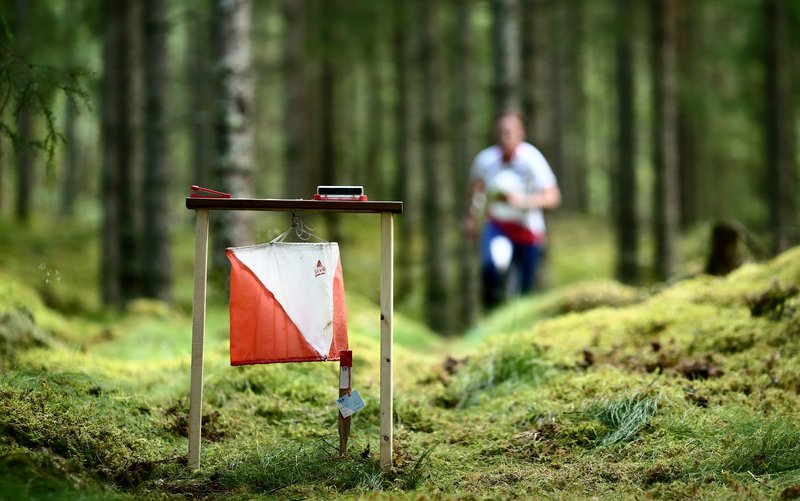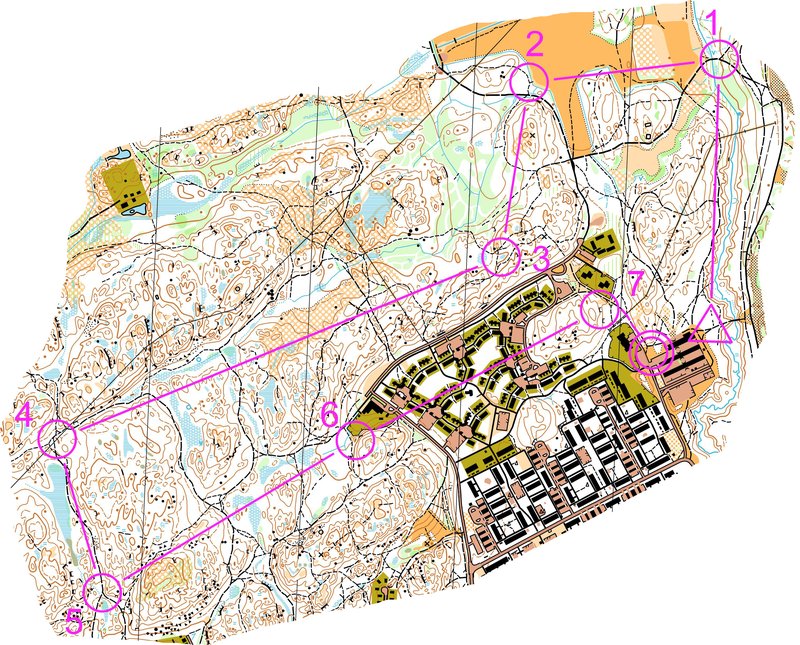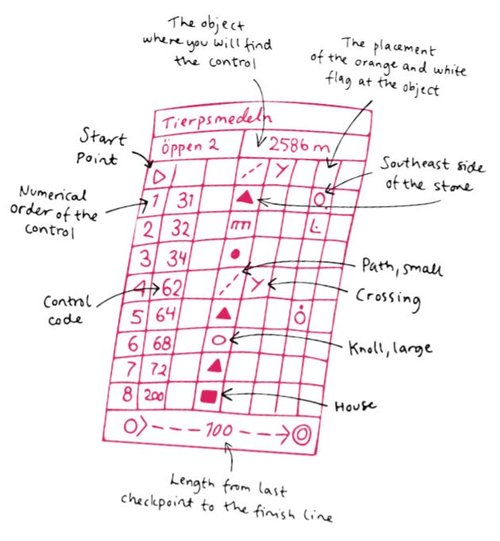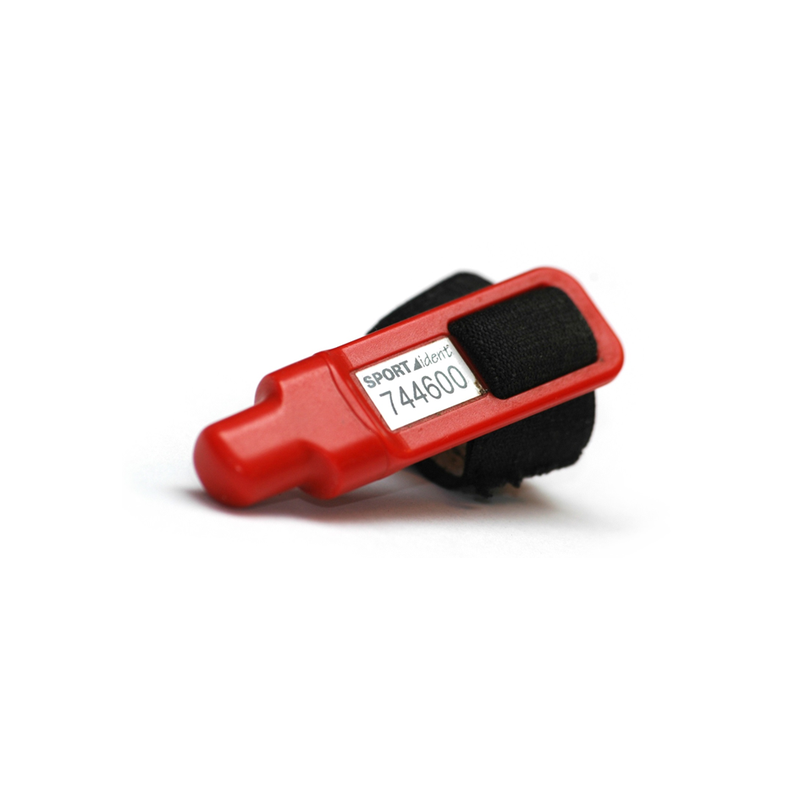In the middle of each circle on the map is a terrain feature, which the control is located by. In the terrain, the control is marked with an orange-white flag.

On the map, the controls are marked with numbered circles. It is always the terrain object in middle of the ring that you should look for, because that is where the flag is located. Common control points are boulders, cliffs, path crossings, buildings, and pits.

The control description
There are often several map characters in the control ring. It can then be difficult to interpret what it is in the middle that constitutes the control point itself. To help you, you have a control description, also called the control definition, which contains detailed information about the course and the controls.
- Each control has a unique code number which is marked both on the control and on the control description. The code number confirms that you are at the right control.
- The description also contains information about which terrain object the control is located at and on which side of it, for example the east side of a boulder.
The control description is usually printed on the map but is also available as separate papers for those who want the description in a specific definition holder on the arm.

To punch the control
In competitions, it is most often electronic timekeeping but sometimes also in training. To register that you have visited all controls in the correct order, you need a control chip to punch with at the controls. After the finish, you will punch out, which means that you register your control punches in the organizer’s competition system and receive a confirmation that you have passed with correct punches. You always need to punch out after the finish line, for the organizer to know that you have come back and are safe, even if you did not complete the entire course.
If you do not have your own control chip, you can borrow/rent it from the organizer.

Sportident
Sportident and Emit are the most common timekeeping systems used, of which the former is the most common in Swedish competitions. In the picture you see someone punching a control. You put the control chip on your finger. At each control, there is a control unit where you insert the chip and receive a sound and light signal as a proof that your visit is registered.
